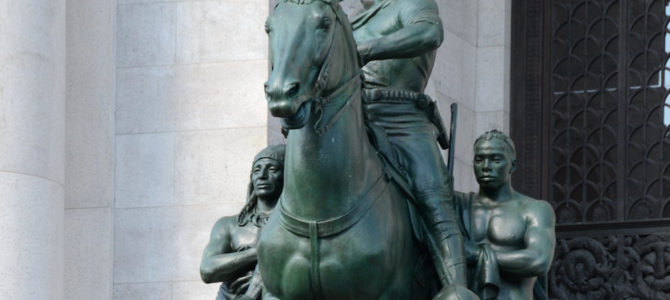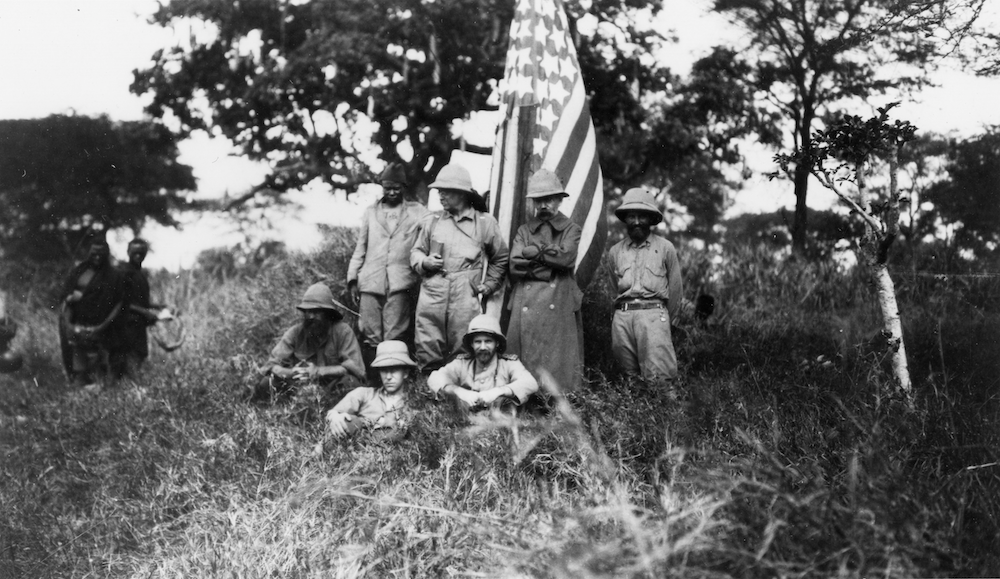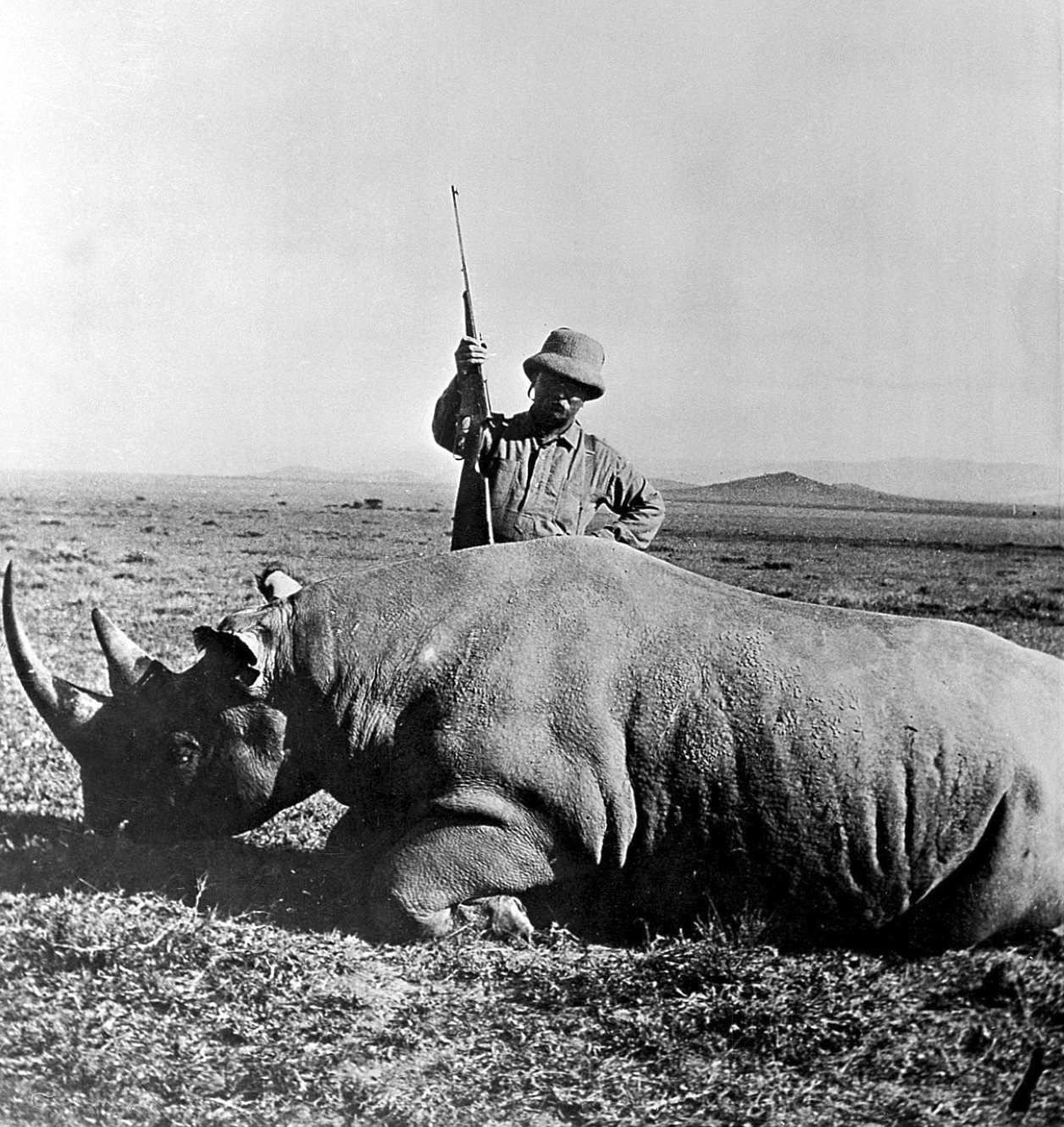
As the woke mob continues its crusade, pillaging cities and purging history, the next victim of the “tear it all down” impulse is Theodore Roosevelt, or at least a statue of him. But if Teddy is so problematic he must be canceled, mustn’t we also cleanse all the artifacts connected to his legacy, including thousands of animals?
The desecraters never intended to stop at Confederate monuments, of course, and now the sculpture honoring the 26th president of the United States, whom the museum described in its statue-assessment press release as having had “troubling views on race,” outside the American Museum of Natural History in New York City must come down.
The statue depicts Roosevelt mounted on a horse between two standing men, a Native American and an African, a trio which famed American architect John Russell Pope described as a “heroic group.” Even the sculptor himself, James Earle Fraser, noted, “The two figures at [Roosevelt’s] side are guides symbolizing the continents of Africa and America, and if you choose may stand for Roosevelt’s friendliness to all races.”
But the museum has requested the statue be removed, saying it “communicates a racial hierarchy that the Museum and members of the public have long found disturbing.” According to Mayor Bill de Blasio, it “explicitly depicts Black and Indigenous people as subjugated and racially inferior.”
Don’t Let Them Disappear
To be sure, Roosevelt’s museum footprint extends far beyond a single statue in NYC. In fact, what Howard Zinn’s “A People’s History of the United States” may not have taught the cancel mob pushing for the removal of everything they find objectionable is that Roosevelt’s passion for nature and conservation boosted the educational inventory of American museums and provided an abundance of invaluable specimens. Roosevelt’s most notable naturalist contributions resulted from a trip he took to Africa at the conclusion of his presidency.
“I am not in the least a game butcher. I like to do a certain amount of hunting, but my real and main interest is the interest of a faunal naturalist,” Roosevelt wrote to the Smithsonian Institution’s administrator, Charles Doolittle Walcott, in 1908. “Now, it seems to me that this opens up the best chance for the National Museum to get a fine collection, not only of the big game beasts, but of the smaller animals and birds of Africa; and looking at it dispassionately, it seems to me that the chance ought not to be neglected.”
And get a fine collection he did. Roosevelt, his son, and a team of scientists embarked on an African hunting expedition, with the Roosevelts killing 296 and 216 animals, respectively, and the accompanying team of scientists harvesting thousands more. Roosevelt valued animal and land conservation, but he also recognized the importance of preserving the memory of disappearing species before civilization could wipe them all out — a principle sorely lost on those who seek to obliterate collective memories today.

“To him, being a responsible naturalist was also about recording the things that would inevitably pass,” wrote Darrin Lunde in Smithsonian Magazine.
Roosevelt Contributed Quite the Collection
Thanks to the expedition, the Smithsonian received not only valuable specimens from Africa, but those hunted by none other than the president of the United States. Roosevelt created a prioritized list of animals he hoped to acquire, including “lion, elephant, black rhinoceros, buffalo, giraffe, hippo, eland, sable, oryx, kudu, wildebeest, hartebeest, warthog, zebra, waterbuck, Grant’s gazelle, reedbuck, and topi.”
He set his sights on one creature in particular, the white rhinoceros, which was nearing extinction. However, the path to obtaining one was treacherous. To get to the Lado Enclave, where the species remained, Roosevelt had to trek through a hot spot of the sleeping-sickness epidemic, which had already claimed the lives of hundreds of thousands of people.
“On the one hand, Roosevelt’s instincts as a conservationist told him to refrain from shooting any white rhino specimens ‘until a careful inquiry has been made as to its numbers and exact distribution,’” Lunde wrote. “But on the other hand, as a pragmatic naturalist, he knew that the species was inevitably doomed and that it was important for him to collect specimens before it went extinct.”
Lunde noted if not for Roosevelt’s hunt, the Smithsonian likely wouldn’t have had another chance to acquire the white rhino species, which is presumed to be extinct in the wild, with only a few remaining in captivity today.

Teddy and his entourage obtained more than 23,000 specimens total, with the United States National Museum and National Zoological Park receiving at least 1,000 large mammal skins and 4,000 small, as well as approximately 5,000 plant specimens. The late Charles Handley, a well-known Smithsonian mammalogist, said the group’s contribution is “still the largest and most comprehensive single research collection of East African flora and fauna ever made.”
It took years to prepare the many animal mounts, some of which are still on display. They were sent to the Smithsonian’s National Museum — with many facsimile species shared widely with other museums — and to the African mammal hall in New York City’s American Museum of Natural History, where some progressives now seek the removal of Roosevelt’s “problematic” statue.
Condemn It All
Unsurprisingly, not everyone at the time was thrilled with Roosevelt’s animal-killing. His response to his detractors then, however, seems incredibly prescient today: “I can be condemned only if the existence of the National Museum, the American Museum of Natural History, and all similar zoological institutions are to be condemned.”
For reasons unrelated to his hunt, today Roosevelt has officially been condemned. While some in favor of removing the monument might argue the statue, not the man himself, is problematic, we’ve witnessed the slippery slope of historical cancellations before: There is no limiting principle. Since the museum has already stated Roosevelt had “troubling views on race,” its condemnation is not merely of the monument, but of the man.
It’s only a matter of time before all the scientific contributions of the Roosevelt-Smithsonian expedition are canceled, too, and for what?
As with George Washington, Thomas Jefferson, a number of abolitionists, Confederate generals, and other historical figures reduced only to their sins and defaced, what is to stop the woke mob from desecrating the scientific contributions of one of America’s most notable conservationists and naturalists over a 60-year-old statue? Roosevelt will have risked his life, and thousands of animals will have died for naught.
Roosevelt may have foreshadowed the destruction of his own museum legacy. Condemning everything? The cancel mob will have no problem with that.









